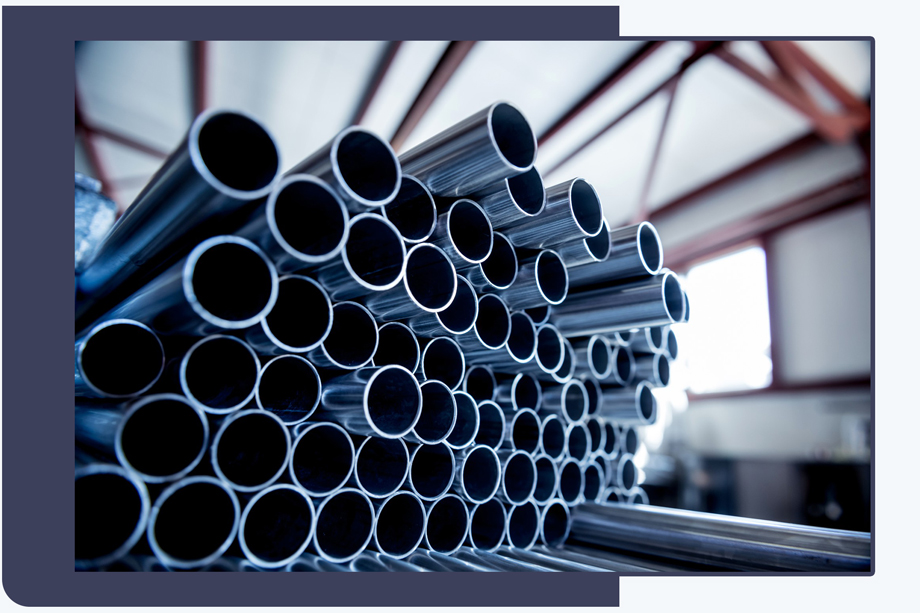No products in the cart.
Stainless Steel Pipes
Stainless steel pipes are essential components in construction, oil and gas, water and wastewater, and processing industries. Known for their high resistance to pressure, heat, and corrosion, these pipes serve as a superior alternative to traditional materials like PVC and non-stainless metals. Their flexibility and durability against temperature and pressure fluctuations make them ideal for transporting various substances, including liquids, gases, and even food products. Utilizing stainless steel pipes as a sustainable and recyclable solution enhances operational efficiency across industries while also contributing positively to environmental conservation


Many customers inquire about the price of stainless steel pipes, which depends on several factors. First, the type of stainless steel pipe must be considered, as prices are usually determined based on length units and weight. Additionally, currency fluctuations have caused price variability, making it difficult to set a fixed price for stainless steel pipes. Therefore, for purchasing and obtaining accurate pricing information, we highly recommend contacting our sales experts directly
A stainless steel pipe is a type of pipe made from corrosion-resistant steel alloy that contains chromium, making it highly resistant to rust and corrosion. These pipes are widely used across various industries such as oil and gas, petrochemical, food processing, and pharmaceuticals. Known for their exceptional durability, thermal resistance, and low maintenance requirements, stainless steel pipes offer reliable performance in demanding environments
Thanks to the chromium content in their alloy composition, stainless steel pipes provide outstanding resistance to corrosion and rust. They boast a long service life and perform exceptionally well under harsh conditions, including high humidity and elevated temperatures. Their smooth, hygienic surface makes them ideal for food and pharmaceutical applications, while also simplifying cleaning and maintenance processes
Stainless steel pipes are produced through hot and cold rolling processes. Initially, stainless steel is formed into sheets or strips, which are then shaped into pipes at high temperatures. Seamless pipes are manufactured using extrusion or cold drawing techniques, ensuring a uniform, weld-free structure. In contrast, welded pipes are created by joining the edges of steel strips through precise welding methods. These production techniques ensure the pipes meet the high standards required for durability, strength, and corrosion resistance in various industrial applications
Stainless steel pipes can be classified from various perspectives, with appearance being one of the primary criteria. They are generally divided into two main categories
These pipes are manufactured without any welded seams, resulting in a smooth and uniform surface. Due to the absence of seams, seamless pipes offer higher resistance to pressure and corrosion, making them ideal for demanding applications
Welded pipes are produced by joining the edges of steel strips through welding, creating a visible seam along the length of the pipe. This manufacturing method is more cost-effective, making welded pipes an economical choice suitable for many standard applications.
Stainless steel pipes serve a wide range of industries, and their applications can be classified into the following key categories
Key Standards for Stainless Steel Pipes
Stainless steel pipes are governed by several important international standards that ensure their quality, performance, and compatibility across various applications. The most widely recognized standards include ASTM, ASME, DIN, ISO, and EN. These standards define critical aspects such as chemical composition, mechanical properties, dimensional tolerances, pressure ratings, and intended applications.
For instance, ASTM and ASME standards are commonly used in North America and focus on structural integrity and safety in high-pressure environments. DIN and EN standards are prevalent in Europe and emphasize precision and consistency. ISO standards, being global, provide a unified framework for international trade and manufacturing Adhering to the correct standard is essential for ensuring reliability, performance, and safety in projects involving stainless steel piping systems


All rights reserved for Sahand Steel Didar. Any unauthorized copying or reproduction will be subject to legal action